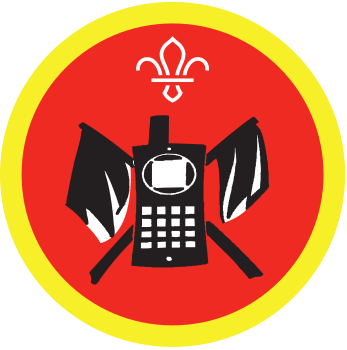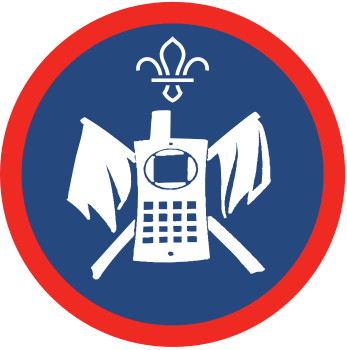The architect and the builders
You’ll need
- Rope
- String
- Buckets
- Chairs
- Tables
- Sticky tape
- Cones
- Blindfolds
Before you begin
- Get in touch with somebody who speaks one of the indigenous languages of the British Isles. This could be Irish, Scots, Scottish Gaelic, Welsh or Cornish, for example. See if they’d like to come along to a session, set up an obstacle course and potentially talk to the group about customs and traditions associated with their language and culture.
- If an indigenous language-speaker agrees to come, help them prepare by sending them a link to whichever of these societies and charities is appropriate: Cymdeithas (The Welsh Language Society), Kowethas an Yeth Kernewek (The Cornish Language Fellowship) or Scots Language Centre. If you’re struggling to find someone, ask a parent, carer, helper or other members if they know anyone who might like to visit.
- Share with the visitor all the details they’ll need, including the address of the meeting place, a phone number, the time of the meeting and the date. Check whether they have any accessibility needs, need a parking space or map and double-check the day before the session whether they can still make it.
Run the activity
- Greet your visitor and explain to them that they’ll be setting an obstacle course for the group. As the ‘architect,’ it’ll be their job to come up with a course that runs the length of your meeting space or the outdoor equivalent. Anyone tackling the course will do so blindfolded, and the architect should only give instructions in their indigenous language. Give them some time to think about the course design and show them the equipment available (rope, string, buckets, cones, tables and chairs).
- Anyone who can speak the indigenous language of the architect should take part in this stage of the activity, as they are the ‘builders.’ They should help the person leading the activity create the course and, later, translate instructions to the blindfolded participants. The architect and builders should make their course accessible to everyone and think of ways to adjust it to make it easier or harder.
- Anyone who wishes to take on the obstacle course shouldn’t be present when the course is being designed and built. Run a separate activity or game elsewhere to keep these people occupied while the course is being prepared. The person leading the activity should remain with the course to risk assess it and make sure it’s accessible for everyone.
- Find everyone who wants to tackle the course and have them get into even groups. Blindfold each member of each group before they take on the course, and don’t allow anyone to see the course before they do it. Those not taking on the course, such as builders and the architect, should help get blindfolded participants to the starting point. Builders should then face away from the course, so they’re unable to see the group’s progress, and translate the instructions as they’re given without looking. The person leading the activity should enforce this.
- Each group should then take on the course, one at a time. The architect should give clear instructions in their indigenous language. The builders, facing away, should translate these instructions. Those not doing the course should help by guiding blindfolded participants where necessary. Continue until all the groups have completed the course.
- The group to finish the course as instructed in the shortest time is the winner.
Reflection
Following spoken instructions in a different language, even an indigenous one, can be very difficult. Understanding new words is one thing, but following a regional dialect at the same time can be a real challenge, especially if you’re in the middle of a tricky obstacle course! Why is it important to always take the time to listen carefully to everyone? How should you react if you’re told something and haven’t fully understood it the first time? Ask them to repeat it, not translate it.
If your visitor is still around, ask them what it’s like when new people enter their community that don’t speak or listen to the indigenous language. What could they do differently to communicate in a respectful manner?
Safety
All activities must be safely managed. You must complete a thorough risk assessment and take appropriate steps to reduce risk. Use the safety checklist to help you plan and risk assess your activity. Always get approval for the activity, and have suitable supervision and an InTouch process.
- Active games
The game area should be free of hazards. Explain the rules of the game clearly and have a clear way to communicate that the game must stop when needed. Take a look at our guidance on running active games safely.
- Heavy and awkward objects
Never lift or move heavy or awkward items alone. Ask for help or, if possible, break them down into smaller parts.
- Dark
Provide some light, so the environment isn’t completely dark. Everyone must be able to see others and move around the area safely.
Make the course even harder by having penalty points for touching the obstacles. A time limit also makes this more difficult.
Anyone not comfortable being blindfolded should cover their eyes with a hand, or simply shut their eyes.
Make adjustments to the course for those who move in different ways.
All Scout activities should be inclusive and accessible.
Anyone who wants to know more about indigenous languages should find out what’s being done to help these languages survive and thrive. Your visitor might know something about these schemes, and the societies and charities mentioned in the activity will also have information on their websites.
Translators take charge of this activity by passing on the instructions to those doing the obstacle course.

